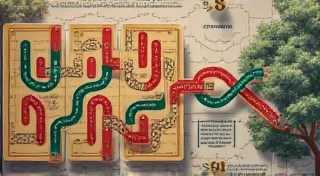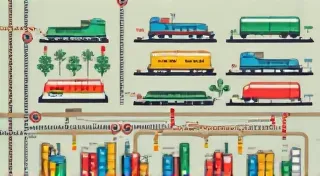A Beginner's Guide to Worker Placement Board Games
Worker placement is a hugely popular mechanic in modern board games, and for good reason! It offers engaging decision-making, strategic depth, and a satisfying sense of progression. But if you're new to the hobby, the concept can seem a little daunting. This guide will break down what worker placement is, provide some excellent beginner-friendly examples, and offer some tips to help you become a more skilled player. The mechanic itself fosters a satisfying sense of ownership and strategic maneuvering that many find deeply rewarding, and understanding the nuances can unlock a whole new level of enjoyment in your board game experiences.
What is Worker Placement?
At its core, worker placement is about limited resources – specifically, your 'workers'. In most worker placement games, you have a limited number of worker tokens that you place on various locations on the game board. These locations represent actions you can take, such as gathering resources, crafting items, recruiting specialists, or claiming victory points. The twist? Once a location has a worker on it, it's generally unavailable to other players until the next round (or until a special rule allows it). This creates direct competition for the most desirable actions, forcing you to prioritize and adapt your strategy. It’s a delicate balance of planning, reacting, and sometimes, a bit of calculated blocking. This type of strategic interaction truly sets worker placement apart from many other board game mechanics.

Key Concepts
Understanding these concepts will help you grasp the nuances of worker placement games:
- Worker Pool: The number of workers you have available each round.
- Action Spaces: The locations on the board where you place your workers.
- Blocking: Preventing opponents from taking an action by occupying the action space.
- Round Structure: Most worker placement games proceed in rounds, with a worker placement phase, a production/resolution phase, and then a cleanup phase.
- Worker Retrieval: How and when your workers return to your pool, ready to be placed again. Some games have persistent workers, others have them return at the end of the round.
Beginner-Friendly Worker Placement Games
Ready to dive in? Here are some fantastic worker placement games that are perfect for newcomers. The entry point for many board game enthusiasts into this fascinating mechanic is surprisingly accessible thanks to some well-designed introductory games.
1. Stone Age
Stone Age is often considered a gateway worker placement game. You guide your tribe through the Stone Age, gathering wood, brick, and food to build huts and advance your civilization. It’s relatively simple to learn, but offers a surprising amount of strategic depth. The variable player powers add replayability. For those who enjoy a slightly different challenge, exploring top 5 cooperative board games can offer a contrasting, yet equally rewarding experience.
2. Lords of Waterdeep
This game puts you in the role of a Lord in the Dungeons & Dragons setting of Waterdeep. You recruit adventurers, complete quests, and acquire buildings, all through clever worker placement. It’s a lighter, more accessible take on the mechanic, with a compelling theme. The strategic depth rivals some heavier games, even though the rules themselves are quite streamlined.
3. Viticulture Essential Edition
Become a winemaker in Tuscany! Viticulture is a slightly more complex option, but its theme and relatively straightforward rules make it approachable for beginners. You’re planting vines, harvesting grapes, and producing wine, all while competing with other winemakers. The complexity adds a layer of satisfying decision-making that keeps you engaged, and the theme immerses you in the world of winemaking. For those seeking even greater strategic challenges, the realm of space exploration and terraforming, as explored in games like Conquering the Cosmos: A Strategy Guide to Terraforming Mars, represents a substantial step up in complexity and long-term planning.

Tips for Mastering Worker Placement
Here's a few tips to elevate your worker placement game. Moving beyond the basics involves anticipating opponent strategies and long-term planning.
- Plan Ahead: Think several rounds ahead. What resources will you need? What actions will be crucial? Consider the long-term implications of your actions and how they will affect your ability to achieve your goals.
- Prioritize: Not every action is created equal. Learn to identify the most important actions and secure them. Sometimes, the most obvious choice isn't always the best; consider the opportunity cost of each action.
- Anticipate Opponents: Try to predict what your opponents will do and block them if necessary. This requires paying close attention to their actions and understanding their potential goals. Mastering this aspect often separates novice players from seasoned veterans.
- Adaptability is Key: Be prepared to change your strategy based on what your opponents do and the resources available. Don’t be afraid to pivot. Rigidity in planning can be your downfall.
- Consider the Timing: Sometimes, delaying an action can be more beneficial than taking it immediately. Think about when you need a specific resource or action. The timing of your actions can be as important as the actions themselves.
The beauty of worker placement often lies in the cascading effect of choices. One seemingly insignificant action can trigger a chain reaction that drastically alters the course of the game. To further appreciate the breadth of modern board gaming, exploring different narratives and gameplay styles can be enriching, as demonstrated in the rise of The Rise of Legacy Games: A Deep Dive into Narrative Board Gaming. This type of game introduces an element of storytelling that significantly expands the possibilities for player engagement.

Advanced Strategies
Once you're comfortable with the fundamentals, you can start exploring more advanced strategies. These involve a deeper understanding of the game's mechanics and a greater ability to anticipate your opponents' moves.
- Action Sequencing: Consider the order in which you take actions. Some actions are more effective when taken before or after others.
- Resource Management: Efficiently managing your resources is crucial for success. Avoid wasting resources on unnecessary actions.
- Blocking Strategies: Strategic blocking can be a powerful tool for disrupting your opponents' plans. However, be mindful of the consequences of your actions. Blocking can also draw negative attention and retaliatory moves.
Conclusion
Worker placement is a rewarding and engaging mechanic that adds a unique layer of strategic depth to board games. With a little practice and these tips, you’ll be placing workers like a pro in no time! Happy gaming! The nuances of worker placement, along with the depth and complexity found in many modern board games, continue to draw new players to the hobby, ensuring its continued popularity and innovation.





